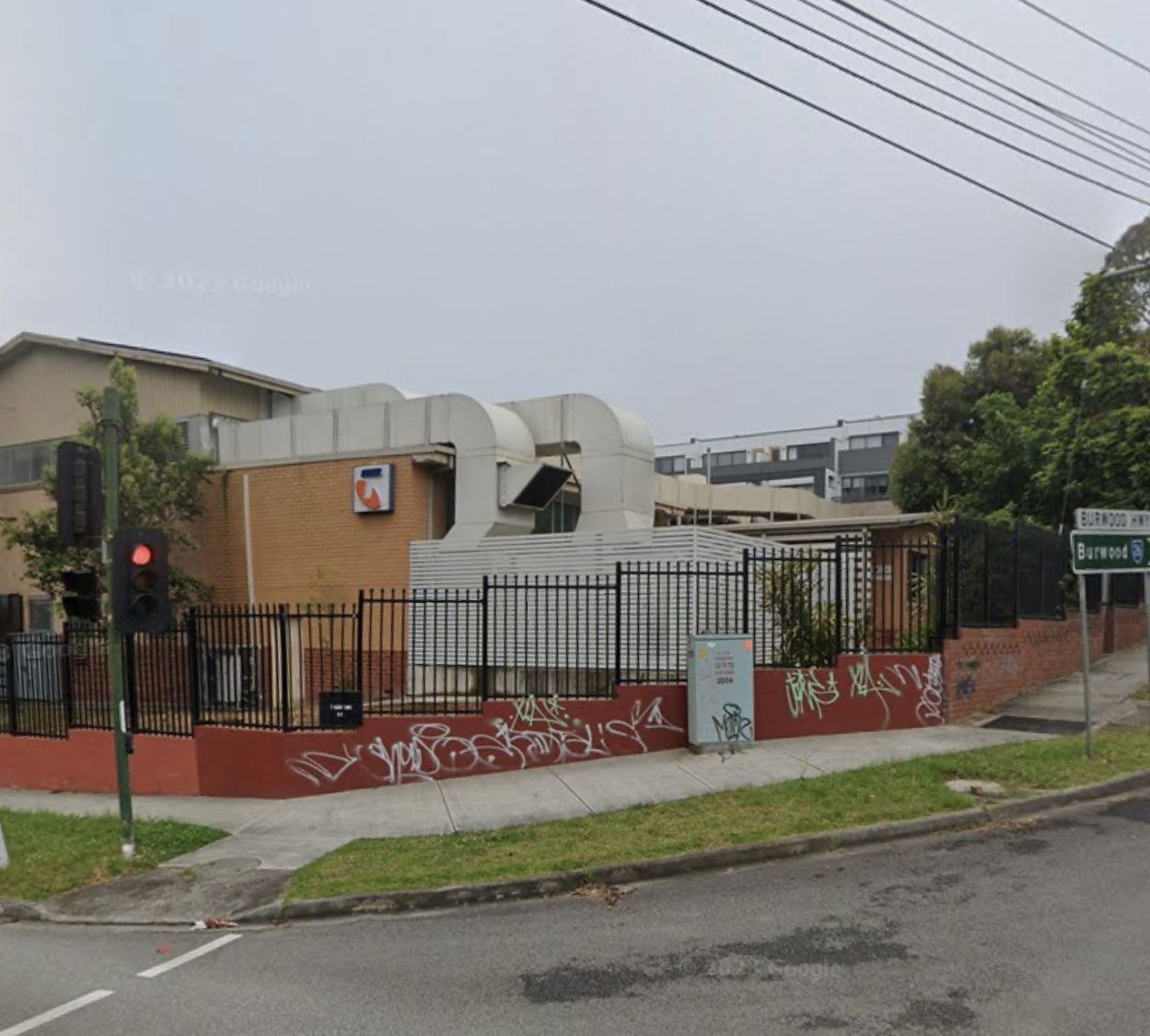Telephone Exchanges

Another geographic feature was revealed while investigating Mr. Cruel crime locations that also have some connection to the electrical transmission circuits - telephone exchange can be found within <2 km of every location, including the other possibly linked cases at Warrandyte, Donvale, Bulleen, and Greensborough. The most notable find is the exchange directly across from the school that both Nicola and Karmien attended, the Presbyterian Ladies College on Burwood, Highway. There is also a telephone pillar on the nature strip just outside of the fence at Karmein’s home on Serpells Rd. This could be a coincidence, another pattern that is irrelevant to the case, or a possibility that Mr. Cruel had some connection to the exchanges.
11 Hillcrest Ave Ringwood to Ringwood Exchange 13 Seymour St, Ringwood > 5 min
Bayswater Secondary College to Bayswater Exchange Valentine St/Church St > Same St
10 Monomeath Ave to Canterbury Exchange 14 High St, Canterbury > 2 min
15 Tennyson St to Kew Exchange 891 High St, Kew > 5 min Or Deepdene Exchange via the Anniversary Trail.
109 Serpells Rd, Templestowe to Templestowe Exchange 109 Porter St, Templestowe > 5 min
561 Main Rd, Eltham (Chan Restaurant) to Eltham Exchange Cnr 561 Main Rd/Pitt St , Eltham
Edgar Creek (via Mahoneys Rd)to Reservoir Exchange 133 High St, Thomastown -4 min
BURWOOD EXCHANGE - DIRECTLY OPPOSITE BURWOOD PRESBYTERIAN COLLEGE

It has been reported that the Chans were having trouble with their security alarms in the weeks prior to the abduction of Karmein. Tampering with the phone lines of an installed alarm system would cause the alarm to fault. Landline systems have some glaring vulnerabilities- For instance, if the landline is cut the alarm will “go off” . This would indicate the offender had knowledge of the technical workings of phone lines and home security systems.
In the early 1950s, the Government embarked on a massive Telecommunications expansion program, nationally. This included the replacement of all magneto and Central Battery "CB" telephone exchanges and telephones, the conversion of old Strowger exchanges (dating to the early 1900s) to the modern 2000-type system, the introduction of direct dialling of trunk calls without the need for an operator, the construction of hundreds of small automatic Crossbar exchanges in rural and semi-rural areas. and the laying of new pits and pipes to support the program. It also saw the phasing out of aerial/overhead wires with underground cable, and the replacement of old dial-type telephones with modern push-button instruments.
To assist in managing the massive increase in network capacity, a huge commitment was made to the recruitment and training of technical staff, mainly through the introduction of the five-year Trainee Technician program, which ran from the early 1950s into the 60s. Thousands of Trainees passed through the scheme, and after graduation were appointed to disciplines of telephone exchange maintenance, telephone exchange installation, telephone maintenance, long-line equipment installation and maintenance, radio, or PABX installation and maintenance. Trainee technicians were sent out on field postings for weeks at a time. A trainee sent to the Ringwood exchange had responsibility for the management of faults and new installation at the unstaffed Warrandyte exchange.
Fisherman's Bend Aerodrome was located near the confluence of the Yarra River with Port Phillip Bay. The area was mainly a vast swamp and was owned by the Commonwealth Government In 1948, The State Electricity Commission (SEC) built a large staff training facility next to the Fishermans Bend Aerodrom Which survived until 1981. In 1949, The PMG's Department set up its Lineman's Training School immediately next to the SEC facility. PMG's Trainee Technicians would spend four weeks at the Lineman's School, gaining an appreciation of transmission line and cable installation and maintenance practices. The Lineman's School relocated to a new site in Doncaster in 1967 (Padula). Doncaster is central in the Mr. Cruel triangle. Technicians and linesmen working the Arial phone lines would carry a Buttinsky phone as part of their toolkits. Clip across the old copper wire, switch it on and the linesman could dial out - a worthy listening device that is untraceable.